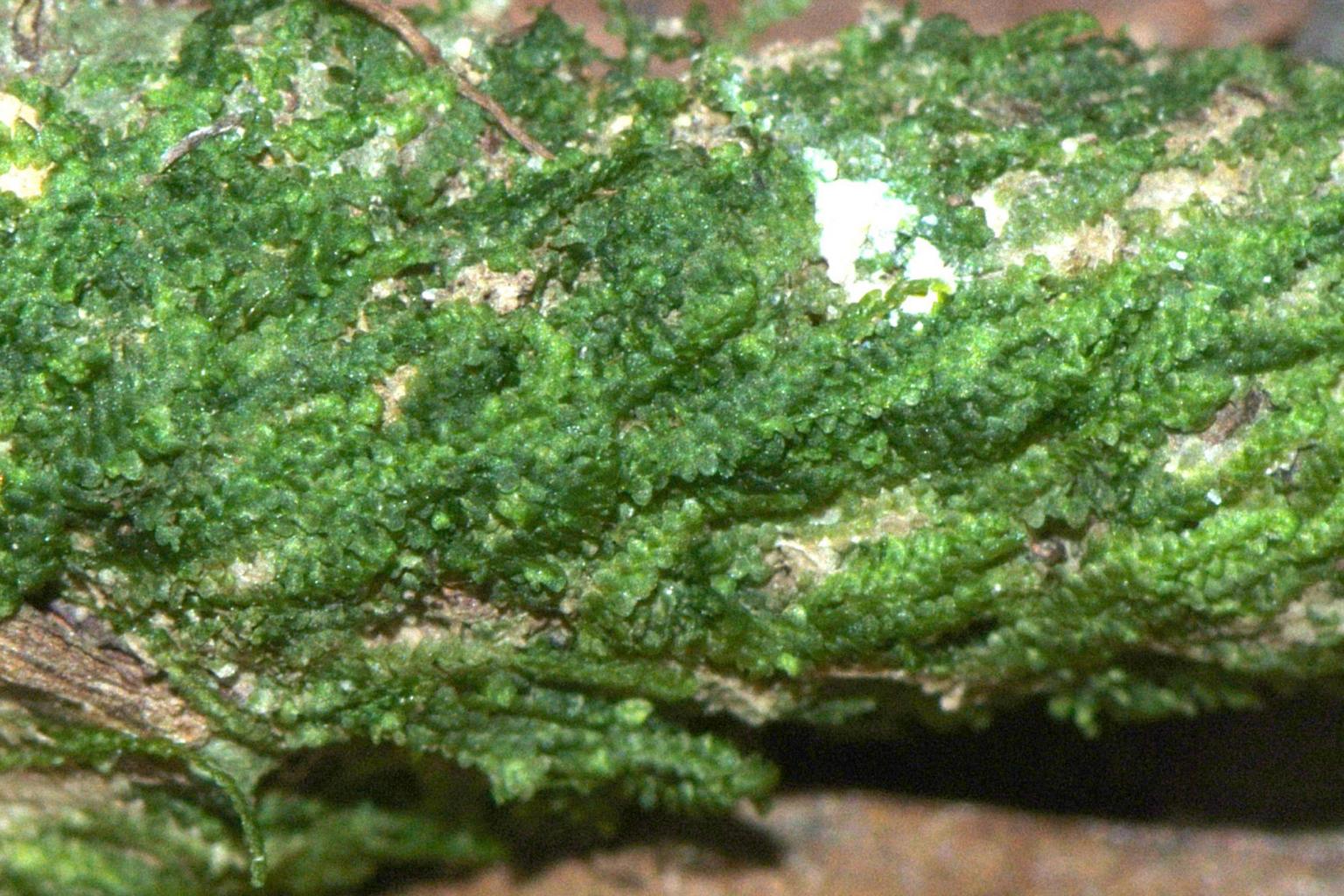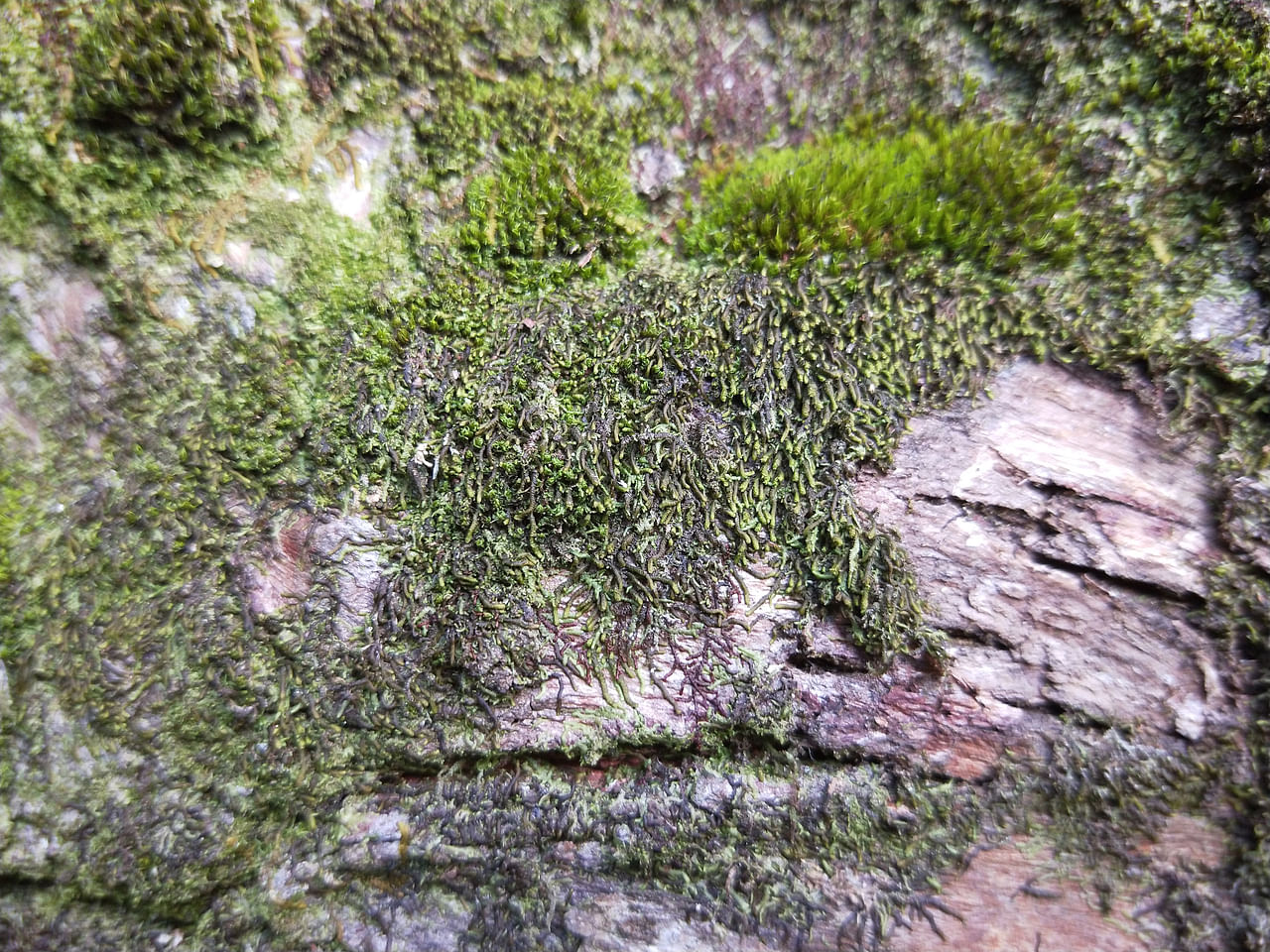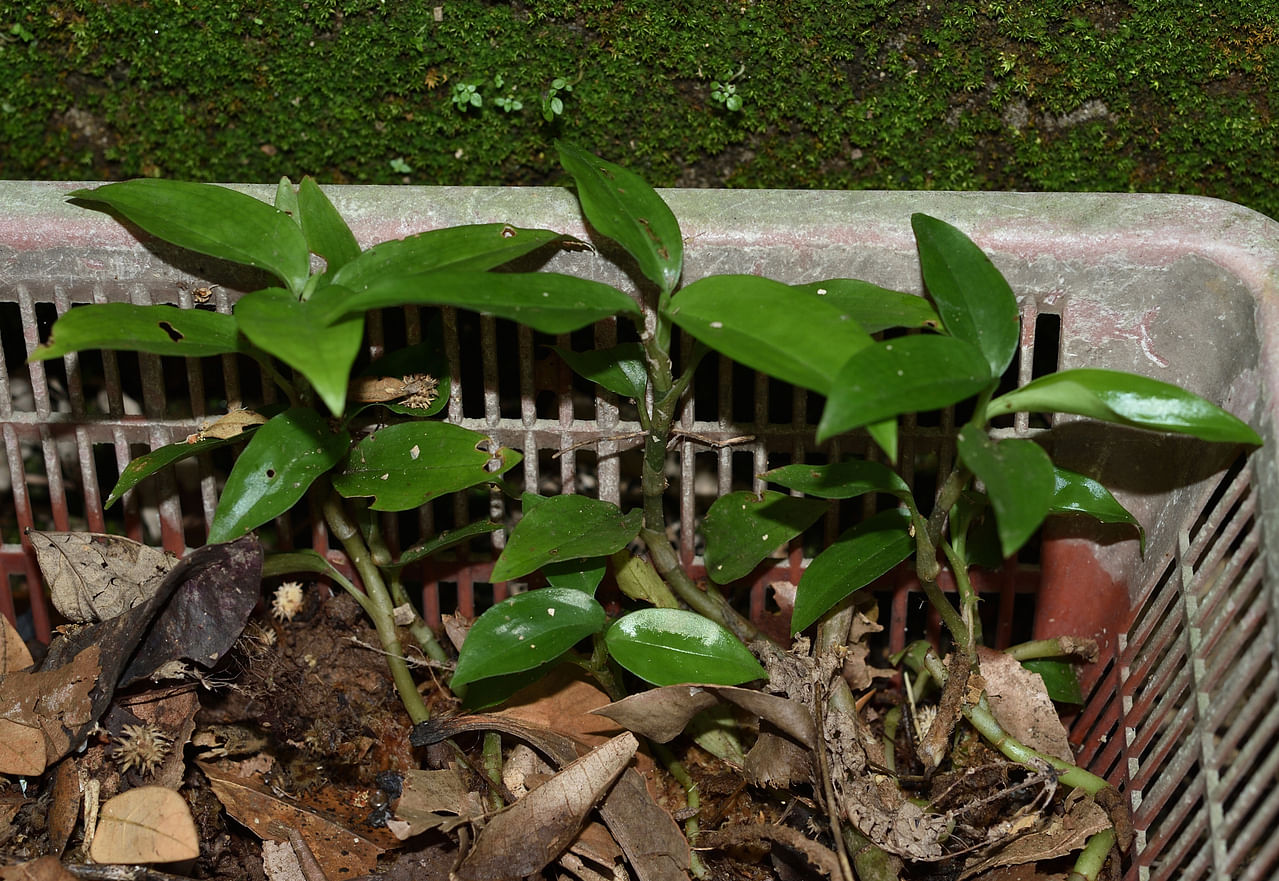Plant that's new to science is one of nine nature finds in Singapore
Sign up now: Get ST's newsletters delivered to your inbox

The Gaolejeunea hoi, which is endemic to Singapore, is named after Dr Ho Boon-Chuan.
PHOTO: WEN YE
Follow topic:
SINGAPORE - In the forest, Dr Ho Boon-Chuan's eyes are drawn not to the colourful birds and flowers that abound but to any green patches on the ground.
The moss expert is always on the lookout for these spore-producing green sheets.
A moss-like patch on a tree at Bukit Timah Nature Reserve he spotted in 2015 helped him to secure his name in flora history, when the plant was confirmed as a species new to science.
Gaolejeunea hoi is named after Dr Ho and is currently endemic to Singapore. It is found on some tree bases and exposed roots in the forests of Bukit Timah and Nee Soon.
The plant falls under the family of liverworts, which are the cousins of mosses.
This species was one of nine plants, fungus and algae published last year as new records or rediscoveries, with more than half of them spotted at the nature reserve.
Dr David Middleton, coordinating director of research and conservation at the Singapore Botanic Gardens, said Dr Ho had handed specimens of his find to two liverwort experts from China.
The two had joined the Gardens to help with a project on cataloguing and describing all the plant species in Singapore.
They closely studied the features of the plant to confirm that it was a new species. After sequencing the genes, they found that the species was the second one under the Gaolejeunea genus, which refers to a category of plants that are closely related. Previously, only one known species found in China was classified under this category.
Dr Middleton said: "Bukit Timah Nature Reserve is already well protected, and the (Gaolejeunea hoi) will just carry on growing. That's where it's meant to be."
As part of the cataloguing project called Flora of Singapore, the new species will be included in a volume on bryophytes, a group of plants that includes mosses and liverworts.
A total of 14 volumes will be born out of the 10-year project. Three of them - an introductory volume, one on the grass family, and another on a group of flowering plants - were published in 2019.

DR BOON-CHUAN HO, NPARKS
PHOTO: Dr Boon-Chuan Ho, NParks
Among the other eight published discoveries last year, five of them are new species recorded in Singapore - including the first red algae found in freshwater here.
Another new record is a plant that belongs to the fig family, but its identity had been a 16-year mystery.
This is because there are numerous species within the group, and many of them look similar, explained Dr Middleton.
But a name was recently given to the Pulau Ubin-dwelling plant - with some help from France, and wasps.
Some wasps are known to lay eggs inside figs, and tiny wasps were observed inside the small figs of the Pulau Ubin plants. After years of studying the plants, the researchers here believed the plants were called Ficus subulata.
They sent the figs to an expert in France, and the scientist confirmed those insects are known to enter the Ficus subulata figs.
The remaining three finds are rediscoveries, which means they were previously thought to be nationally extinct.

Tim Wing Yam
PHOTO: Tim Wing Yam
Among the rediscoveries is a ground orchid called the hairy jewel orchid, which was last collected more than 120 years ago. It was spotted in Tengah Forest in 2020.
Unlike the more flamboyant and showy orchids hanging from trees, the hairy jewel orchid can tolerate low light, and grow on the ground.
A mushroom - the Sculptured toadstool - seen prominently perched near the base of a tree in Bukit Timah Nature Reserve in 2020, after it was last collected there in 1939, is another rediscovery.Dr Middleton said discovering new species and records is exciting but added: "The goal is to understand the natural heritage and plant diversity of Singapore in its entirety to best protect and conserve them."

NG XIN YI
PHOTO: Ng Xin Yi
Species new to science
Gaolejeunea hoi
The species, which is endemic to Singapore and related to mosses, was spotted on tree bases and exposed roots in the forests of Bukit Timah and Nee Soon. Each of the leaf-like bodies forming the green "mat" is no more than 1cm long and about 1mm wide. The tiny, spore-producing plants thrive in damp environments.
New records in Singapore
Lepidogyne longifolia

MATTI NIISSALO, NPARKS
PHOTO: Matti Niissalo, NParks
This small population of three orchid plants was first found in Bukit Timah Nature Reserve in 2019, in the fully saturated soil of a freshwater swamp. The plant is also native to Johor and Sumatra.
Ptyssiglottis kunthiana

MATTI NIISSALO, NPARKS
PHOTO: Matti Niissalo, NParks
About 100 to 200 of these flowering plants can be found growing in the humid shade among large boulders in the primary forest of Bukit Timah Nature Reserve. The plants cover a 20m by 70m area, and were first spotted in 2020.
Thysananthus ciliaris

DR BOON-CHUAN HO, NPARKS
PHOTO: Dr Boon-Chuan Ho, NParks
This species is related to the Gaolejeunea hoi and classified as a liverwort. Each of its tiny shoots can grow up to 3cm long. It is a rare and poorly known species from South-east Asia, with just five verified collections recorded so far. It is considered critically endangered in Singapore, where these plants were discovered growing among other tiny flora on the buttress of a heritage tree in the Singapore Botanic Gardens in 2020.
Ficus subulata

PAUL KIAM FEE LEONG, NPARKS
PHOTO: Paul Kiam Fee Leong, NParks
Collected several times between 2005 and last year from various patches of secondary forest in Pulau Ubin, the messy plant was an enigma to scientists for years. The Ficus subulata is part of the fig family which comprises a large number of species. This Pulau Ubin species is similar to a number of other types of plants found in Singapore and Malaysia, making it difficult for scientists to pin down its identity. It was eventually identified recently with the help of a scientist from France and some wasps.
Visia cylindrocellularis

REGINA SHU WEN YEO
PHOTO: Regina Shu Wen Yeo
This is the only known red algae species found in freshwater environments in Singapore. The rare red algae was discovered in 2018 in a forest stream of Bukit Timah Nature Reserve. It was formerly thought to be found only in one location in Pahang, Malaysia, and its discovery in Singapore suggests that the algae's distribution is not as restricted as previously thought.
Rediscoveries
Hairy jewel orchid or Hetaeria oblongifolia

TIM WING YAM, NPARKS
PHOTO: Tim Wing Yam, NParks
This ground orchid was last collected in 1897, before it was found in Tengah Forest in 2020. Some of the plants have been transplanted to the Singapore Botanic Gardens, and there are ongoing efforts to germinate seeds. This species has tiny flowers, unlike the more flamboyant orchids people are familiar with.
Sculptured toadstool or Amanita sculpta

NPARKS
PHOTO: NPARKS
This prominent mushroom has a cap that ranges from 10cm to 27cm wide, and a stalk up to 26cm high. It was last collected from Bukit Timah Nature Reserve in 1939, until it was sighted in the nature reserve in 2020 near the base of a tree.
Sand olive or Dodonaea viscosa

XIN YI NG, NPARKS
PHOTO: Xin Yi Ng, NParks
The coastal flowering plant was assessed as nationally extinct in 2008, but more than 10 of the plants were discovered at a reclaimed site in Tuas in 2019. Seeds and cuttings have been taken from the rediscovered plants and are being grown at the National Parks Board's Native Plant Centre. Over 10,000 of the plant's seeds are kept in the Singapore Botanic Gardens' Seed Bank - which conserves plant species and reintroduces them to the wild, if needed.

